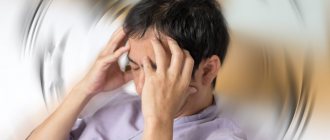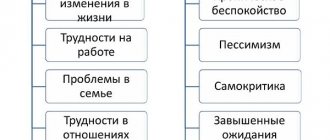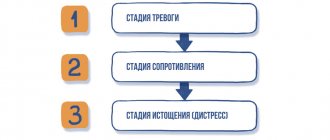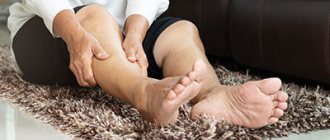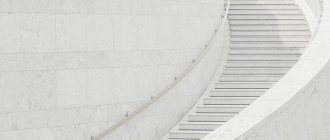Tension headaches are typically diffuse, mild to moderate in intensity, and are often described as feeling like a “tight band” around the head. Tension headache (TTH) is the most common type of headache, yet the causes of this type of headache are still not well understood.
Treatment for tension headaches is quite effective. Management of tension-type headaches is often a balance between a healthy lifestyle, the use of non-drug treatments, and adequate drug treatment.
Symptoms
Symptoms of tension headaches include:
- Dull, aching headache
- A feeling of “tightness” or pressure in the forehead or sides of the head and at the back of the head
- Soreness of the scalp, neck and shoulder muscles
Tension headaches fall into two main categories - episodic and chronic.
Episodic tension headaches
Episodic tension headaches can last from 30 minutes to a week. Episodic tension headaches occur on fewer than 15 days per month for at least three months. Frequent episodic tension headaches can become chronic.
Chronic tension headaches
This type of tension headache lasts several hours and may be continuous. If headaches occur 15 or more days per month for at least three months, they are considered chronic.
Tension headaches and migraines
Tension headaches can sometimes be difficult to distinguish from migraines. Additionally, if a patient has frequent episodic tension-type headaches, they may also have migraines.
Unlike some forms of migraine, tension headaches are usually not accompanied by blurred vision, nausea, or vomiting. And if during migraines physical activity increases the intensity of the headache, then during headaches stress loads do not have such an effect. Increased sensitivity to any light or sound can sometimes occur with tension headaches, but these symptoms are uncommon.
How to cope with migraines triggered by stress and long-term anxiety?
You may have noticed that anxiety and stress can trigger a migraine attack. Sometimes an acute migraine strikes during a period of relaxation after stressful days. However, a few simple steps can ease tension and help prevent headaches.
Stress is associated with migraine attacks in up to 80% of people[1]. In the days leading up to the onset of an attack, many people report irritability, increased anxiety, depressed mood, and stress.[2] Studies have examined the effects of reducing stress, or “reducing,” as a migraine trigger, often focusing on weekend headache attacks.
Professor Dawn Buse of Albert Einstein College of Medicine in New York says that “about 20% of people who suffer from episodic migraine (14 or fewer days per month) are depressed, and this percentage increases with the number of days of attacks per month. A comorbid anxiety disorder occurs in 20% of people with episodic migraine and 30-50% of people with chronic headache (more than 15 attack days per month).”[3]
The role of stress in migraine is multifaceted: stress can contribute to the onset of migraine, act as a trigger for headache attacks, increase their intensity and duration, and can also be a risk factor for transition to chronic migraine[4].
Particular attention should be paid to the consequences of reducing stress as a migraine-provoking factor. This type of migraine is called a “weekend migraine” because it can occur on a Saturday or Sunday at home after a busy week[5]. For some people, stress is not the main migraine trigger; it can enhance the effects of other triggers, such as foods or odors.
Stress is not always the main migraine trigger; it can enhance the effects of other triggers, such as foods or odors.
Scientists around the world are arguing: does migraine provoke anxiety or anxiety causes migraine? This is not a simple question, and an exact answer to which has not yet been found. One thing is clear that in this way a vicious circle arises: stress-migraine-chronic form[4].
The mechanism of a migraine attack triggered by stress is not fully understood, but there are some hypotheses that explain this relationship. Brain cells that control mood, sleep and pain use a chemical called serotonin to regulate how they communicate with each other. When a migraine attack occurs, these cells become more active than normal, causing serotonin levels to change and causing anxiety[6]. Conversely, when stress occurs, a chain of reactions is activated that affects serotonin levels. A sudden decrease in serotonin levels in brain cells can cause headaches due to the release of neuropeptides or constriction of blood vessels.
To find out how much your migraine attacks are affected by stress, keep a migraine diary for several months. This can help you find headache patterns and pinpoint what types of stress may make you more likely to have a migraine attack.
Take a migraine test
Questionário ID-Migraine™ eo adequado diagnostico da migrânea
In addition to finding a doctor, keeping a headache diary, and finding effective therapy, one of the most important things you can do to combat migraines is to relieve stress, which sounds easy, right? Wrong. In our busy lives, how can we better manage the stress associated with migraines? Try to eat right, avoid fatty, salty, spicy foods. Get enough time to sleep. Use meditation techniques to relax. Add essential vitamins to your diet.
To combat migraines, use meditation techniques to relax.
Research conducted by the American Migraine Foundation in conjunction with the American Headache Association[7] has identified the most effective stress management steps for people with migraines:
- Determine your priorities.
Think about your priorities and write them down in two lists labeled “Life” and “Now.” What are the most important things on your list? What can you fix? Think about what really matters when you manage your time and prioritize. Being always on the go and focusing on tasks that don't make you happy is not the best way to live a low-stress life.
- Save your time.
Learn to plan for “you” in your life. Use your calendar to protect yourself and remember that your needs are important. Give yourself half an hour during the day and use it to get up and get your body moving. Sometimes the word “no” can be your best friend. Use it to turn down offers that only add chaos to your life.
- Make time for relationships and personal growth.
Research shows that being with other people relieves stress. Schedule “together time” with your loved ones, and be intentional about getting off the couch and doing something fun. By improving your relationships and prioritizing what makes you happy, stress will instantly be minimized.
- Learn to be assertive and communicate.
If you tend to communicate passively, chances are you're not letting people know what you want in life. Strong communication skills can help you gain self-confidence, understand your feelings, communicate without anger, and reduce stress.
- Get enough sleep.
In a recent survey of more than two hundred people living with migraine, more than 85% reported clinically significant poor sleep quality, which was associated with headache frequency, depression and anxiety. In their article entitled “Sleep, Insomnia, and Migraine,” Drs. Hulker, Vargas, and Dodik present a simple plan for improving your sleep. Good sleep includes exercising every day, not eating or caffeine before bed, going to bed at the same time, and not using mobile devices or other devices for half an hour to an hour before bed.
Sleep is one of the best methods to combat migraines.
We cannot influence external factors beyond our control, but we can control our emotions. Coping with the stress of a migraine will significantly improve your well-being and help reduce other migraine symptoms. Start taking steps in the right direction today.
- Kelman, L. The triggers or precipitants of the acute migraine attack. 2007; 27(5), 394-402.
- Stress and psychological factors before a migraine attack: A time-based analysis Masahiro Hashizume,corresponding author1,1 Ui Yamada,1 Asako Sato,1 Karin Hayashi,1 Yuichi Amano,1 Mariko Makino,1 Kazuhiro Yoshiuchi,2 and Koji Tsuboi1 Biopsychosoc Med . 2008; 2: 14. Published online 2008 Sep 18. doi: 10.1186/1751-0759-2-14
- The Link Between Migraine, Depression and Anxiety American Migraine Foundation
- The Stress and Migraine Interaction Khara M Sauro 1, Werner J Becker Headache 2009 Oct;49(9):1378-86. doi: 10.1111/j.1526-4610.2009.01486.x.
- Reduction in perceived stress as a migraine trigger Testing the “let-down headache” hypothesis Richard B. Lipton, MD Dawn C. Buse, PhD Charles B. Hall, PhD Howard Tennen, PhD Tiffani A. DeFreitas, MS Thomas M. Borkowski, PhD Brian M. Grosberg, MD Sheryl R. Haut, MD 2014 American Academy of Neurology
- Why are migraineurs more depressed? A review of the factors contributing to the comorbidity of migraine and depression Daniel Baksa1,2, Xenia Gonda2,3,4, Gabriella Juhasz Neuropsychopharmacol Hung 2017; 19(1): 37–44)
- Stress and Migraine American Mugraine Foundation
Causes
The causes of tension headaches are not known. Medical experts believed that tension headaches occur due to problems in the muscles of the face, neck and scalp, which in turn are caused by strong emotions, excess exertion or stress. But research shows that muscle spasm is not the cause of this type of headache.
The most common theories hold that there is an increased sensitivity to pain in people who have tension headaches and perhaps have an increased sensitivity to stress. Increased muscle soreness, a common symptom of tension headaches, may be a result of increased overall pain sensitivity.
Triggers
Stress is the most common trigger that causes tension headaches.
Risk factors
Risk factors for tension headaches include:
- Gender. Women are more likely to get this type of headache. One study found that nearly 90 percent of women and 70 percent of men experience tension headaches during their lifetime.
- Average age of the patient. The incidence of tension-type headaches peaks around age 40, although these headaches can develop at any age.
Complications
Due to the fact that headaches can be quite common, they can significantly affect work productivity and overall quality of life, especially if they become chronic. Frequent pain can disrupt your usual lifestyle and overall performance.
Where to look
The location of the pain may indicate the cause. For example, a migraine attack can begin from the temple and spread to half the head; increased blood pressure can manifest itself as a dull pain in the back of the head. Pain from tension or stress feels like your head is being squeezed by a hoop. With ARVI, pain may occur in the bridge of the nose, eyes and forehead. All these characteristics are individual, and in different situations the causes and consequences may be different.
Article on the topic
The head is to be cut off. Principles for selecting drugs for the treatment of migraine
Diagnostics
The diagnosis of tension-type headache is primarily based on medical history and symptoms and neurological examination.
The doctor may be interested in answers to the following questions:
- When did the symptoms begin?
- Has the patient noticed any triggers, such as stress or hunger?
- Were the symptoms continuous or episodic?
- How severe are the symptoms?
- How often do headaches occur?
- How long did you last have a headache?
- What does the patient believe reduces symptoms and what increases symptoms?
In addition, the doctor is also interested in the following details:
- Characteristics of pain. Is the pain throbbing? Is the pain dull, constant or sharp?
- Pain intensity. A good indicator of headache severity is the amount of time a patient can work during a headache attack. Can the patient work? Are there any episodes where the headache led to awakening from sleep or sleep disturbance?
- Localization of pain. Does the patient feel pain throughout the entire head, only on one side of the head, or just in the forehead or eye sockets?
Instrumental examination methods
If a patient has unusual or intense headaches, the doctor may order additional testing to rule out more serious causes of the headaches.
The two most commonly used diagnostic methods are CT (computed tomography) and MRI, which allow visualization of organs and tissues and detection of morphological changes.
Identifying tension headaches
TTH is determined by a doctor based on an examination of the patient, an assessment of the anamnesis (life history, previous diseases), neurological and mental state. The doctor also evaluates heredity and the condition of internal organs.
As a rule, a consultation with an experienced doctor is enough to establish a diagnosis. In rare cases, additional examination methods may be needed in the form of blood and urine tests, electroencephalography and brain tomography.
If you have a headache, you should not immediately run to a tomography or encephalography. Visit your doctor first!
Treatment
Some patients with tension headaches do not see a doctor and try to treat the pain on their own. Unfortunately, repeated self-use of painkillers can itself cause severe headaches.
Drug treatment
There are a wide variety of medications, including over-the-counter ones, that can help relieve pain, including:
- Painkillers. Simple over-the-counter pain relievers are usually the first line of treatment for headaches. These include aspirin, ibuprofen (Advil, Motrin IB, others), and naproxen (Aleve). Prescription medications include naproxen (Naprosyn), indomethacin (Indocin), and ketorolac (ketorolac tromethamine).
- Combined drugs. Aspirin or acetaminophen or both, often combined with caffeine or a sedative in one medicine. Combination medications may be more effective than medications with a single active ingredient.
- Triptans and drugs. For people who have both migraines and tension-type headaches, triptans can provide effective headache relief. Opiates, or narcotics, are rarely used due to their side effects and high risk of addiction.
Daily and occasionally
By its nature, headaches are very heterogeneous. Its most common form is chronic periodic headaches in the form of tension, migraine attacks and other, rarer forms, when there is no connection with an organic disease of the brain, and measures aimed at dilating blood vessels not only do not alleviate, but, on the contrary, can intensify pain.
Another type is the so-called secondary headaches. They are associated with a variety of diseases, sometimes life-threatening and requiring emergency intervention from specialists. Such diseases include intracranial hemorrhages, brain tumors, cerebrovascular accidents, increased or decreased blood pressure, infections of the nervous system, damage to various structures of the skull (sinuses, teeth, joints, hearing organs, etc.). Each of these forms requires special treatment methods.
Click to enlarge
Prophylactic drugs
Other medications may be prescribed to reduce the frequency and severity of attacks, especially if the patient has frequent or chronic headaches that are not relieved by pain medications.
Preventive medications may include:
- Tricyclic antidepressants. Tricyclic antidepressants, including amitriptyline and nortriptyline (Pamelor), are the most commonly used medications to prevent the development of tension headaches. Side effects of these drugs may include weight gain, drowsiness, and dry mouth.
- Other antidepressants. There is evidence that antidepressants such as venlafaxine (Effexor XR) and mirtazapine (Remeron) are effective in patients who are not depressed.
- Anticonvulsants and muscle relaxants. Other medications that may prevent tension headaches from developing include anticonvulsants such as topiramate (Topamax) and muscle relaxants.
Lifestyle adjustments and home remedies
Rest, ice packs, or long, hot showers can often reduce the intensity of headaches.
Non-drug treatment
- Acupuncture. Acupuncture may provide temporary relief from chronic tension headaches.
- Massage. Massage can help reduce stress and relieve tension. It is especially effective for relieving muscle spasms in the back of the head, neck and shoulders.
- Deep breathing, biofeedback and behavioral therapy. A variety of relaxation treatments are very helpful in treating tension headaches, including deep breathing and biofeedback.
Prevention methods
Sharp pain in the head is a symptom of a number of disorders, which are often acquired. This means that they are easy to prevent if you follow the recommendations of doctors:
- give up bad habits - they form toxins that adversely affect brain cells;
- exclude from the diet fatty foods, sweets, salt and spices in large quantities, fast food;
- carry out moderate physical activity - it is important to maintain muscle tone to prevent diseases of the cervical spine;
- normalize your sleep schedule.
The Clinical Brain Institute specializes in the diagnosis and treatment of diseases that manifest as severe headaches. Our center has modern equipment for conducting complex examinations, and our doctors have extensive experience in treating head pain. For most patients, it is enough to follow the recommendations at home, but the center offers the possibility of comfortable placement in a hospital.
Clinical Brain Institute Rating: 3/5 — 1 votes
Share article on social networks
Causes and nature of psychogenic headaches
What causes pain in the head:
- frequent experiences of people who are anxious and suspicious;
- fears of illness, panic attacks, a tendency to “invent” diseases that do not exist in a person;
- overwork caused by physical and mental stress;
- neuroses, especially hysterical (the desire, therefore, to attract attention to oneself, that is, the patient has a “desire” to cause a headache, this is embodied in the subjective sensation of pain);
- hypochondriacal neurosis, in which long-term fixation on the problems of illness leads to feelings that have no basis in reality;
- neuroses accompanied by the development of severe depression.
A distinctive feature of psychogenic headache is the inability to relieve pain with painkillers and antispasmodics. Pain can be very diverse in its manifestations. Patients often describe it as having some unusual characteristics. Sometimes in the form of a squeezing hoop, a “moving lump”, a “driven nail”, a “rotating stake”, etc. Descriptions are usually vivid in nature with a pronounced emotional overtone. Similar complaints occur in childhood. The absence of existing pathological prerequisites for the occurrence of pain still requires treatment for psychogenic headaches, since patients experience them, sometimes quite painfully.
4.Treatment
The effectiveness of therapy for tension-type headache depends, firstly, on the information content and reliability of the diagnostic results, and secondly, on how fully and accurately it was possible to take into account the individual characteristics of a particular case.
Almost always, it is necessary to normalize the lifestyle, exercise and rest regime, restorative and vitamin therapy, physiotherapeutic methods, a psychotherapeutic course to increase stress resistance - despite all the “banality” of such prescriptions, in some cases they turn out to be a decisive therapeutic factor.
Among medications, anxiolytics are prescribed (drugs that reduce the level of anxiety, so-called daytime tranquilizers), according to indications - antidepressants, anti-inflammatory drugs, vasodilators, muscle relaxants, stimulants of cerebral circulation and nutrition. Actually, analgesics are effective only for rare attacks as part of episodic tension-type headache; Chronic tension-type headache requires a systemic, fairly long, controlled (and adjusted depending on the dynamics of well-being) course of treatment.


